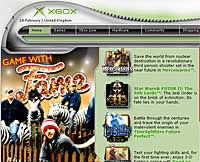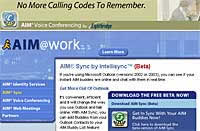 Frontier Silicon, the British company that makes chips for mobile digital television and digital radio products, has completed it US$28 million (€21m/£14.5m) investment round funding.
Frontier Silicon, the British company that makes chips for mobile digital television and digital radio products, has completed it US$28 million (€21m/£14.5m) investment round funding.
Irish venture capital firm ACT led the US$28 million investment in Frontier Silicon, with other participants in the venture funding round being Apax Partners, AltaBerkeley Venture Partners, Quilvest and Bluerun Ventures (formerly known as Nokia Venture Partners).
Frontier Silicon has developed two new products, the Apollo chip and Kino chip, which allow mobile phones to receive and record television programmes on their mobile phones, electronic organisers or MP3 players.
Anthony Sethill, founder and chief executive of Frontier Silicon, said that the money raised would be used for product development and marketing purposes.
He boldly predicted that half of all mobile phones would be capable of receiving television programmes within a year or so at an additional cost to the user of under $50 (€37/£26).
Frontier Silicon currently employs 60 people between its English, Hong Kong and Chinese operations and boasted a turnover of more than $30 million (€22.7m/£15.6m) in 2004.
 “This latest investment allows us to aggressively target and drive market share in the emerging mobile digital television market in the same way that we have established our chips in over 70 percent of DAB digital radios,” said Anthony Sethill.
“This latest investment allows us to aggressively target and drive market share in the emerging mobile digital television market in the same way that we have established our chips in over 70 percent of DAB digital radios,” said Anthony Sethill.
Frontier Silicon produces chips for DAB digital radios, with its customers including such industry heavyweights as Bang & Olufsen, Grundig, Hitachi, Philips and Samsung.
The company also delivered the world’s first complete system-on-chip designs for DAB digital radio as well as the world’s first Combined Digital TV and Radio Chip.
 A deal between a search technology company and an online film distributor could be a further step towards the next Big Thing on the Web: search engines that let you find movies and TV episodes by what is said within them – and then buy or rent them.
A deal between a search technology company and an online film distributor could be a further step towards the next Big Thing on the Web: search engines that let you find movies and TV episodes by what is said within them – and then buy or rent them. With TV networks starting to distribute more of their productions on the Web and the growth of broadband-enabled, home media PCs there’s clearly a growing demand for consumers to be able to access and download content legally.
With TV networks starting to distribute more of their productions on the Web and the growth of broadband-enabled, home media PCs there’s clearly a growing demand for consumers to be able to access and download content legally. When Sony start slapping the world famous Walkman mobile music brand on their products, you know that they mean business, and their new Sony Ericsson W800 has been proudly trumpeted as the first mobile phone to combine a high-quality digital music player and a 2 Megapixel camera.
When Sony start slapping the world famous Walkman mobile music brand on their products, you know that they mean business, and their new Sony Ericsson W800 has been proudly trumpeted as the first mobile phone to combine a high-quality digital music player and a 2 Megapixel camera. Sadly, we’re going to have to wait a while before we can start adjusting our lifestyle behaviour – the release of the Sony Ericsson W800 is not scheduled until the third quarter of 2005
Sadly, we’re going to have to wait a while before we can start adjusting our lifestyle behaviour – the release of the Sony Ericsson W800 is not scheduled until the third quarter of 2005 Microsoft is teaming up with one of Japan’s hotshot video game developers to create games for its next-generation video game console, XBox2 – a sure-fire sign that it’s determined to grab a fat slice of the Japanese market.
Microsoft is teaming up with one of Japan’s hotshot video game developers to create games for its next-generation video game console, XBox2 – a sure-fire sign that it’s determined to grab a fat slice of the Japanese market. A founding member of former video game software developer Square Co., the 42-year-old is famed for creating the role-playing series, ‘Final Fantasy’, which has shifted more than 60 million copies to date.
A founding member of former video game software developer Square Co., the 42-year-old is famed for creating the role-playing series, ‘Final Fantasy’, which has shifted more than 60 million copies to date. America Online has announced plans to enable users of its instant messaging service (AIM) to see when friends and business associates are online, even if they’re not on the contact list.
America Online has announced plans to enable users of its instant messaging service (AIM) to see when friends and business associates are online, even if they’re not on the contact list. AOL has also announced a relationship with CareerBuilder.com to bring together recruiters and online job applicants. A prospective employer, who spots a job seeker’s résumé with an AIM address, can instantly send a message to that person in real time.
AOL has also announced a relationship with CareerBuilder.com to bring together recruiters and online job applicants. A prospective employer, who spots a job seeker’s résumé with an AIM address, can instantly send a message to that person in real time. The International Football Association Board has agreed to trial microchip technology, which can determine whether a ball has crossed the goal line.
The International Football Association Board has agreed to trial microchip technology, which can determine whether a ball has crossed the goal line. Destiny Media Technologies has announced a new version of its proprietary anti-piracy and digital distribution system, Promo Only MPE 1.1, designed to secure electronic music distribution within the music industry.
Destiny Media Technologies has announced a new version of its proprietary anti-piracy and digital distribution system, Promo Only MPE 1.1, designed to secure electronic music distribution within the music industry. “The new build was modified with the customers’ ease of use in mind,” gushed Dean Ernst, Director of the MPE project at Promo Only. “The response to version 1.1 has been unprecedented and reflective of the overwhelming number of users signed-on to date.”
“The new build was modified with the customers’ ease of use in mind,” gushed Dean Ernst, Director of the MPE project at Promo Only. “The response to version 1.1 has been unprecedented and reflective of the overwhelming number of users signed-on to date.” Sony has announced that it is to end production on its Clie line of PDAs in Japan.
Sony has announced that it is to end production on its Clie line of PDAs in Japan. Our guess is that they’re going to focus their energies on ramping up the feature list on Sony Ericsson smartphones, developing the PlayStation Portable and finally producing the iPod killer they so desperately need.
Our guess is that they’re going to focus their energies on ramping up the feature list on Sony Ericsson smartphones, developing the PlayStation Portable and finally producing the iPod killer they so desperately need. Apple has updated its iPod photo line-up with a new slim 30GB model, holding up to 7,500 songs, for just £249 ($475, e360) and a new 60GB model, holding up to 15,000 songs, for £309 ($590, e446)
Apple has updated its iPod photo line-up with a new slim 30GB model, holding up to 7,500 songs, for just £249 ($475, e360) and a new 60GB model, holding up to 15,000 songs, for £309 ($590, e446) The truth is that the iPod photo seems to be far better as a versatile MP3 player and photo presentation unit rather than something for serious photographers to use for direct-to-camera storage.
The truth is that the iPod photo seems to be far better as a versatile MP3 player and photo presentation unit rather than something for serious photographers to use for direct-to-camera storage. A handy Google search feature went live this week that lets users find showtimes at nearby movie theatres using either their computer or mobile phones and other wireless devices that use short-message services.
A handy Google search feature went live this week that lets users find showtimes at nearby movie theatres using either their computer or mobile phones and other wireless devices that use short-message services.